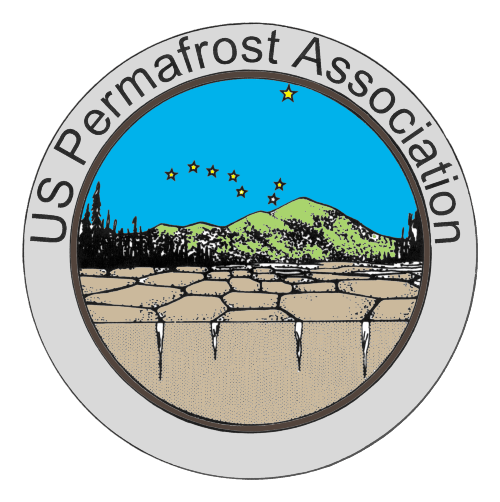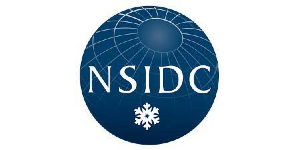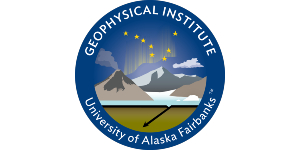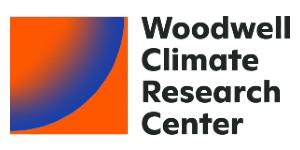|
2020014374 Song Xiaoyan (Southwest Minzu University, Institute of Qinghai-Tibetan Plateau, Chengdu, China); Wang Genxu; Ran Fei; Huang Kewei; Sun Juying and Song Chunlin. Soil moisture as a key factor in carbon release from thawing permafrost in a boreal forest: Geoderma, 357, Article 113975, illus. incl. 4 tables, sketch map, 53 ref., January 1, 2020.
The feedback between the atmosphere and permafrost soils containing large carbon stocks is currently considered the most important carbon-cycle feedback, but it is missing from climate models due to many uncertainties. Knowledge of how differences in post-thaw hydrological conditions affect carbon (C) release is critical for predicting permafrost feedback, but this knowledge remains limited. In this study, permafrost and active layer soils from the southern margin of the Eurasian boreal permafrost region in Northeast China were collected and incubated under experimentally modified moisture to monitor their CO2 and CH4 productions under simulated natural, drier and flooded conditions. We also characterized soil properties related to soil organic carbon (SOC) quality and microbial activities to determine their relations with measured C productions. We found that permafrost had higher C release per gram of SOC basis (C vulnerability) than the active layer, which suggested that there would be a high risk for C emissions in the permafrost region when permafrost thaws in the warming future. However, hydrological conditions following the permafrost thaw control these emissions. Permafrost C decomposed in relatively aerobic upland systems had higher C emissions than that decomposed in anaerobic wetland environments. Our results suggest a greater climate forcing of C release in aerobic than anaerobic conditions, but there are some uncertainties resulting from the unknown long-term CH4 production rates. Moreover, we found that the aerobic C production in permafrost after thawing could be constrained by water stress, suggesting that previous predictions based on soil incubations at natural soil moisture might overestimate the aerobic permafrost C release.
DOI: 10.1016/j.geoderma.2019.113975
2020014353 Goncharova, O. Yu. (Lomonosov Moscow State University, Soil Science Department, Moscow, Russian Federation); Matyshak, G. V.; Epstein, H. E.; Sefilian, A. R. and Bobrik, A. A. Influence of snow cover on soil temperatures; meso- and micro-scale topographic effects (a case study from the northern West Siberia discontinuous permafrost zone): Catena (Giessen), 183, Article 104224, illus. incl. 5 tables, sketch map, 52 ref., December 2019.
Snow cover distribution has a profound impact on ground temperature, on thickness of the active layer, and on permafrost. The purpose of this study was to evaluate the effects of snow cover on soil thermal regimes in West Siberia and to characterize the meso- and micro-scale spatial variation of winter ground surface temperature (GST). Maximum snow cover thickness (>80 cm) and duration (»8 months) were recorded for the lower elevation areas and in the forest site (using a vertical array of iButtons). Shallow snow cover and a late snow formation characterized open raised areas with shallow permafrost. Our results indicate that 20 cm snow cover thickness is the minimum for generating a significant insulating effect. Date of snow cover formation with thickness >20 cm had the strongest influence on soil temperature regimes. We found a significant negative correlation between winter GST and elevation. This relationship is indirectly controlled by snow cover redistribution. We additionally have shown that elevation, n-factor and winter GST are the variables most significantly affecting thaw depth in permafrost-affected soils. This research dictates the need for taking into account snowfall, and its redistribution due to the variability of local factors, in predicting the effects of climate change on soil temperatures and active layer depth. According to long-term meteorological data for West Siberia, a temporal trend in snowfall is not observed. Nevertheless, considerable interannual fluctuations in snow cover thickness can lead to interannual variations in the soil thermal regimes.
DOI: 10.1016/j.catena.2019.104224
2020011074 Jamali H., Ehsan (University of Tokyo, Atmosphere and Ocean Research Institute, Tokyo, Japan); Katou, Masafumi; Tara, Kenji; Asakawa, Eiichi and Mikada, Hitoshi. Mirror reverse time migration using vertical cable seismic data for methane hydrate exploration: Geophysics, 84(6), p. B447-B460, illus. incl. sketch map, 45 ref., November 2019. Includes appendices.
Gas hydrates are located in the permafrost and in deepwater shallow sediments, where low temperature and high pressure satisfy the stability conditions of methane clathrates to remain as solid compounds. Hydrates are found in a form of fine-layered or altered-layered structure with hiatuses and necessitate high-resolution surveys, which may not be achieved by conventional marine acquisition using towed streamers. We have developed a recent case study in which the vertical cable seismic (VCS) method has been used for high-resolution subseafloor imaging using a set of buoyed vertical-arrayed receivers that are anchored to the seafloor. The observation close to the target in the deepwater environment provides a higher signal-to-noise ratio and higher resolution. The primary reflections, however, could not achieve reliable depth images in the data processing due to their limited subsurface coverage. We used a reverse time migration (RTM) implementation of mirror imaging to extend the spatial subsurface coverage by using receiver ghost reflections. Because conventional velocity analysis methods are not applicable to the VCS survey due to the asymmetrical reflection path between the source and receiver, we implemented seismic interferometry and generated virtual surface seismic data from VCS data for velocity analysis. To preserve the resolution, amplitudes, and phase characteristics, we applied mirror RTM on the ghost reflections in the original VCS data rather than imaging the virtual data. The introduced case study using a VCS survey for identifying the methane hydrate system of the Umitaka Spur in the Sea of Japan led to high-resolution images, which suggest that a large gas chimney exists beneath a pockmark and is responsible for transferring methane gas from a deep hydrocarbon source to the shallow sediments. A bottom-simulating reflector as the base of the gas hydrate stability zone was also imaged.
DOI: 10.1190/geo2018-0422.1
2020012544 Krickov, Ivan V. (Tomsk State University, BIO-GEO-CLIM Laboratory, Tomsk, Russian Federation); Pokrovsky, Oleg S.; Manasypov, Rinat M.; Lim, Artem G.; Shirokova, Liudmila S. and Viers, Jerome. Colloidal transport of carbon and metals by western Siberian rivers during different seasons across a permafrost gradient: Geochimica et Cosmochimica Acta, 265, p. 221-241, illus. incl. 1 table, sketch map, 55 ref., November 15, 2019.
In contrast to fairly good knowledge of dissolved (<0.45 mm) and particulate (>0.45 mm) fluxes of carbon, nutrients and metals from the land to the ocean, colloidal (1 kDa-0.45 mm) forms of solutes are rarely quantified. This is especially true for Siberian rivers draining into the Arctic Ocean: because of organic-rich soils, colloidal fractions of elements are high and may sizably impact coastal biological processes. However, the main environmental parameters such as seasons, river size, climate, permafrost distribution and landscape parameters of the watershed controlling colloidal distribution of organic carbon (OC) and metals remain totally unknown. Here we used on-site centrifugation combined with ultrafiltration via 3, 30 and 100 kDa pore size membranes and 1 kDa dialysis to characterize colloidal size fractionation of OC and metals in 32 western Siberian rivers, ranging in size from 10 to 150,000 km2 watershed area, across a climate and permafrost gradient (from absent to continuous permafrost). The dominant forms of OC and metals was low molecular weight LMW<3 kDa fraction and medium molecular weight (MMW3 kDa-30 kDa) colloids. The LMW<3 kDa fraction of OC increased in the order spring<autumn<summer, following progressive replacement of allochthonous medium and high molecular weight colloids in spring by autochthonous LMW organic ligands in summer; the latter possibly occurred due to exometabolites of plankton and periphyton. The LMW OC fraction became low again in autumn, presumably due to appearance of allochthonous DOM washed out by autumn rains from peat soil at maximum thawing depth. The size of the watershed had subordinate influence on colloidal distribution compared to seasons. The effect of landscape parameters of the watershed on the colloidal status of solutes was subordinate to seasonal and permafrost-zone controls. Overall, the ongoing environmental changes in WSL will likely decrease the proportion of mineral (Fe, Al-bearing) colloids of C and trace metals exported by rivers to the Kara Sea. As a result, the flux of dissolved C, micro-nutrients and metal toxicants may become increasingly bioavailable to coastal aquatic biota.
DOI: 10.1016/j.gca.2019.08.041
2020012576 Niu Fujun (Chinese Academy of Sciences, Northwest Institute of Eco-Environment and Resources, Laboratory of Frozen Soil Engineering, Lanzhou, China); Gao Zeyong; Lin Zhanju; Luo Jing and Fan Xingwen. Vegetation influence on the soil hydrological regime in permafrost regions of the Qinghai-Tibet Plateau, China: Geoderma, 354, Article 113892, illus. incl. sketch map, 72 ref., November 15, 2019.
Soil hydrological processes are extremely complex in high-altitude regions and are recognized to have positive effects on soil quality, nutrient cycling, herbage yield, and runoff generation. However, soil hydrological processes have not been fully quantified in permafrost regions of the Qinghai-Tibet Plateau (QTP). To fill this gap, the soil water dynamics, soil water storage, soil infiltration processes, soil water retention and soil hydraulic conductivity were systematically monitored in different alpine ecosystems (alpine wet meadow (AWM), alpine meadow (AM), and alpine steppe (AS)). The results revealed that the soil water content was significantly higher in AWM soil in the shallow layer, while it was higher in AM soil in the deeper layer. Moreover, the response of soil water to rainfall was markedly more sensitive in AS soil than in AM and AWM soils. The average soil water storage amount reached 440 mm in the 0-100 cm soil interval of the AM, which was nearly 1.6-fold higher than that in the AS and 1.2-fold higher than that in the AWM. The existence of vegetation enhanced the soil infiltration rates in AWM and AM soils 1.3-fold and 1.5-fold, respectively, and decreased the soil infiltration rate 1.2-fold in AS soil. Nuclear magnetic resonance (NMR) results indicated that soil water in AS soil was mainly composed of capillary water and mobile water but was composed of bound water and capillary water in AWM soil and AM soil, respectively. The results from a redundancy analysis (RDA) demonstrated that the vegetation in the study region regulates the soil hydrological regime by altering the soil structure and soil biochemistry. Moreover, the mechanism of vegetation influence on soil hydrological processes suggests that the regional runoff generation will shift with the vegetation succession. The information obtained in this study may aid in the understanding of changes in the ecological environment and regional hydrological cycles under climate change.
DOI: 10.1016/j.geoderma.2019.113892
2020014711 Dzierzek, Jan (University of Warsaw, Faculty of Geology, Warsaw, Poland); Szymanek, Marcin and Nitychoruk, Jerzy. Slope processes in the high Arctic; a 30-year-long record from Spitsbergen: Boreas, 48(4), p. 856-866, illus. incl. 1 table, geol. sketch map, 42 ref., October 2019.
Ten monitoring sites were established in 1986 near the Scottbreen and Renardbreen glaciers (Bellsund, Spitsbergen) in order to determine the rates of gelifluction on raised marine terraces and on talus cones, accumulation on talus cones, and movement of the protalus rampart. The measurements were performed in 1987, 2007 and 2016. The results obtained revealed a very slow rate of changes on the surface of the analysed area. During 30 years, only one out of 84 points where the gelifluction rate was measured was displaced by 15 cm down-slope. The maximal annual and average gelifluction rates were calculated at 0.5 cm and 0.18 cm a-1, respectively. Several measurement points did not change their position over the observation period. As shown by the observations, the gelifluction rate largely does not depend on slope inclination. Studies of talus cones allowed the level of cone increment to be determined as 314.3 kg of scree per square metre. Analysis of factors influencing the rate of mass movement allowed for correlation of the small-scale gelifluction movement at the analysed sites with the general trends of climate warming. In this part of the Arctic, these trends are manifested by soil desiccation. It appears that slope processes depend on very local topoclimatic factors. Analysis of the obtained data with regard to palaeogeographical and climatic investigations suggests that the ice segregation forms on raised marine terraces developed during the last Holocene cooling, i.e. the Little Ice Age. Abstract Copyright (2019), John Wiley & Sons, Ltd.
DOI: 10.1111/bor.12393
2020014720 Hosek, Jan (Czech Geological Survey, Prague, Czech Republic); Prach, Jindrich; Krizek, Marek; Sida, Petr; Moska, Piotr and Pokorny, Petr. Buried late Weichselian thermokarst landscape discovered in the Czech Republic, Central Europe: Boreas, 48(4), p. 988-1005, illus. incl. sects., strat. cols., 3 tables, geol. sketch maps, 104 ref., October 2019.
Pronounced climatic warming associated with the Late Weichselian Pleniglacial-to-Lateglacial transition caused considerable environmental changes throughout the former periglacial zones (in Europe ~53°-46°N). During permafrost degradation and subsequent ground subsidence (i.e. thermokarst processes), the landscape changed rapidly. In this study we investigated a flat mid-altitude area in south Bohemia, Czech Republic, lying close to the southern limit of the Weichselian permafrost. We discovered palaeo-lake basins with sedimentary infillings up to 11 m in depth. According to radiocarbon and palynostratigraphical dating, these basins were formed at the onset of the Late Pleniglacial-to-Lateglacial transition, whereas the smaller depressions were formed later. We suggest that the basins resulted from thermal and fluvio-thermal erosion of the former permafrost and represent remnants of discontinuous gullies and possibly collapsed frost mounds (pingo/lithalsa scars). The formation of this a fossil thermokarst landscape was climatically driven and multiple phased, with the major phase during the climatic warming and wetting at the onset of GI-1e (Bolling) and the minor phase during GI-1c (Allerod). This study enhances knowledge of the palaeogeography of the former European periglacial zone by showing that Late Pleistocene thermokarst activity could have had a significant impact on the evolution of the landscape of at least some regions of central Europe along the southern limit of the continuous permafrost zone. The research also points to a similar history for the physical transformation of the landscape of the former European periglacial zone and current thermokarst landscapes and could be a valuable source of information with respect to the future transformation of the Arctic under conditions of ongoing global warming. Abstract Copyright (2019), John Wiley & Sons, Ltd.
DOI: 10.1111/bor.12404
2020009077 Seppi, Roberto (University of Pavia, Department of Earth and Environmental Sciences, Pavia, Italy); Carturan, Luca; Carton, Alberto; Zanoner, Thomas; Zumiani, Matteo; Cazorzi, Federico; Bertone, Aldo; Baroni, Carlo and Salvatore, Maria Cristina. Decoupled kinematics of two neighbouring permafrost creeping landforms in the eastern Italian Alps: Earth Surface Processes and Landforms, 44(13), p. 2703-2719, illus. incl. 5 tables, sketch maps, 69 ref., October 2019.
An overall acceleration of rock glacier displacement rates in the Alps has been observed in recent decades, with several cases of destabilization leading to potential geomorphological hazards. This behaviour has been attributed to the rising permafrost temperature, induced by atmospheric warming and regulated by thermo-hydrological processes. Landforms derived from the interaction of glacier remnants and permafrost are widespread in mountain areas, but are less studied and monitored than talus rock glaciers. This work presents a comparative study of a talus rock glacier and a glacial-permafrost composite landform (GPCL) in the Eastern Italian Alps. The two landforms are only 10 km apart, but have rather different elevation ranges and main slope aspects. The kinematics and ground thermal conditions were monitored from 2001 to 2015 along with geomorphological surveys, analyses of historical maps and remote sensing data. The dynamic behaviour of the rock glacier was similar to the majority of monitored rock glaciers in the Alps, with an acceleration after 2008 and a velocity peak in 2015. In contrast, the GPCL had a nearly unchanged displacement rate during the observation period. Statistical analyses of kinematic vs. nivo-meteorological variables revealed a dynamic decoupling of the two landforms after 2008 that corresponds with increased winter snow accumulation. Although the kinematics of both landforms respond to ground surface temperature variations, the collected evidence suggests a different reaction of ground surface temperature to variations in the precipitation regime. This different reaction is likely due to local topo-climatic conditions that affect snow redistribution by wind. The different reactions of the two systems to the same climatic forcing is likely a legacy of their different origins. GPCL dynamics result from interaction of permafrost and residual glacial dynamics that are associated with possible peculiarities in the internal/basal meltwater circulation, whose future response is uncertain and requires improved understanding. Copyright 2019 John Wiley & Sons, Ltd. Copyright 2019 John Wiley & Sons, Ltd.
DOI: 10.1002/esp.4698
2020014437 Lacelle, Denis (University of Ottawa, Department of Geography Environment and Geomatics, Ottawa, ON, Canada); Fontaine, Marielle; Pellerin, André; Kokelj, Steve V. and Clark, Ian D. Legacy of Holocene landscape changes on soil biogeochemistry; a perspective from paleo-active layers in northwestern Canada: Journal of Geophysical Research: Biogeosciences, 124(9), p. 2662-2679, illus. incl. 2 tables, 67 ref., September 2019.
Recent climate warming is contributing to permafrost degradation and vegetation change; however, little is known about the legacy of Holocene landscape change on contemporary soil biogeochemical conditions. In permafrost soils of northwestern Canada, widespread permafrost degradation occurred during the early Holocene warm interval and its impacts on soil biogeochemistry are archived in the paleo-active layer. Here we show contrasting profiles of soil soluble chemistry and organic carbon composition at sites affected by different types of permafrost degradation. At sites that experienced increased depth of thaw, the relict active layer contained a lower abundance of soluble ions than the underlying undisturbed permafrost; however, both the relict active layer and undisturbed permafrost contained mainly old recalcitrant organics suggesting that minor microbial degradation of organics had occurred. At sites that experienced past thaw slumping, the relict active layer had a higher solute content and contained both young-degradable and old-recalcitrant organics due to the integration of slumped surface organic mats into the colluvial soils or vegetation re-colonizing the surface of the former slump. Our results show that permafrost degradation that occurred during the early to mid-Holocene have preconditioned the biogeochemical conditions in near-surface permafrost soils such that significant local variability exist following past landscape changes. Thus, determining the state of soil soluble chemistry and SOC in permafrost should be done within a paleo-landscape change framework to better forecast CO2-CH4 emissions and solutes release from thawing permafrost. Abstract Copyright (2019). American Geophysical Union. All Rights Reserved.
DOI: 10.1029/2018JG004916
2020011776 Revil, André (Université Savoie Mont Blanc, Laboratoire EDYTEM, Chambery, France); Razdan, Mridul; Julien, Stéphane; Coperey, Antoine; Abdulsamad, Feras; Ghorbani, Ahmad; Gasquet, Dominique; Sharma, Ravi and Rossi, Magali. Induced polarization response of porous media with metallic particles; Part 9, Influence of permafrost: Geophysics, 84(5), p. E337-E355, illus. incl. 10 tables, 50 ref., September 2019.
We consider a mixture made of dispersed metallic particles immersed into a background material saturated by an electrolyte. Below the freezing temperature (typically 0°C to -4°C), a fraction of the liquid water in the pore space is transformed into ice, whereas the salt remains segregated into the liquid-pore water solution. Our goal is to understand how freezing affects the complex conductivity (induced polarization) of such mixtures. Complex conductivity measurements (96 spectra) are performed in a temperature-controlled bath equipped with a high-precision impedance meter. We cover the temperature range from +20°C to -15°C to -18°C and the frequency range from 10-2 Hz to 45 kHz. The spectra are fitted with a double Cole-Cole complex conductivity model. A finite-element model is used to further analyze the mechanisms of polarization by considering an intragrain polarization mechanism for the metallic particles and a change of the conductivity of the background material modeled with an exponential freezing curve. This curve is used to relate the liquid water content to the temperature. In the context of freezing, we test all the aspects of the intragrain polarization model developed in the previous papers of this series, at least for a weakly polarizable background material. The Cole-Cole exponent and the chargeability are observed to be essentially independent of temperature including in freezing conditions. This means that all the relaxation times of the system follow the same temperature dependence and that the chargeability is controlled by the volume fraction of metal. The instantaneous conductivity (high-frequency conductivity) and the relaxation times depend on the temperature in a predictable way, and their product can be considered to be essentially temperature independent. The analytical and numerical models can reproduce the inverse relationship between the relaxation time and the instantaneous conductivity.
DOI: 10.1190/geo2019-0013.1
2020012400 Stone, Lindsay E. (Wilfrid Laurier University, Cold Regions Research Centre, Waterloo, ON, Canada); Fang, Xing; Haynes, Kristine M.; Helbig, Manuel; Pomeroy, John W.; Sonnentag, Oliver and Quinton, William L. Modelling the effects of permafrost loss on discharge from a wetland-dominated, discontinuous permafrost basin: Hydrological Processes, 33(20), p. 2607-2626, illus. incl. 6 tables, sketch map, 85 ref., September 30, 2019.
Permafrost degradation in the peat-rich southern fringe of the discontinuous permafrost zone is catalysing substantial changes to land cover with expansion of permafrost-free wetlands (bogs and fens) and shrinkage of forest-dominated permafrost peat plateau. Predicting discharge from headwater basins in this region depends upon understanding and numerically representing the interactions between storage and discharge within and between the major land cover types and how these interactions are changing. To better understand the implications of advanced permafrost thaw-induced land cover change on wetland discharge, with all landscape features capable of contributing to drainage networks, the hydrological behaviour of a channel fen sub-basin in the headwaters of Scotty Creek, Northwest Territories, Canada, dominated by peat plateau-bog complexes, was modelled using the Cold Regions Hydrological Modelling platform for the period of 2009 to 2015. The model construction was based on field water balance observations, and performance was deemed adequate when evaluated against measured water balance components. A sensitivity analysis was conducted to assess the impact of progressive permafrost loss on discharge from the sub-basin, in which all units of the sub-basin have the potential to contribute to the drainage network, by incrementally reducing the ratio of wetland to plateau in the modelled sub-basin. Simulated reductions in permafrost extent decreased total annual discharge from the channel fen by 2.5% for every 10% decrease in permafrost area due to increased surface storage capacity, reduced run-off efficiency, and increased landscape evapotranspiration. Runoff ratios for the fen hydrological response unit dropped from 0.54 to 0.48 after the simulated 50% permafrost area loss with a substantial reduction of 0.47 to 0.31 during the snowmelt season. The reduction in peat plateau area resulted in decreased seasonal variability in discharge due to changes in the flow path routing, with amplified low flows associated with small increases in subsurface discharge, and decreased peak discharge with large reductions in surface run-off. Abstract Copyright (2019), John Wiley & Sons, Ltd.
DOI: 10.1002/hyp.13546
2020009042 Zhao Dongsheng (Chinese Academy of Sciences, Institute of Geographical Sciences and Natural Resources Research, Beijing, China) and Wu Shaohong. Projected changes in permafrost active layer thickness over the Qinghai-Tibet Plateau under climate change: Water Resources Research, 55(9), p. 7860-7875, illus. incl. 1 table, sketch maps, 66 ref., September 2019.
Climate warming would increase the active layer thickness (ALT) of permafrost, which can cause changes in the hydrological cycle, ecological processes, and carbon flux in cold regions. However, changes in permafrost ALT due to climate warming remain poorly quantified, which limits our understanding of environmental change in cold regions. In this study, the Lund-Postam-Jena dynamic vegetation model is coupled to the Kudryavtsev model to examine changes in permafrost ALT on the Qinghai-Tibet Plateau (QTP) under climate change scenarios based on the representative concentration pathways (RCPs). The results suggest that the permafrost ALT on the QTP would exhibit a significant increasing trend under the climate change scenarios, and a large increment of ALT may occur in the northwestern QTP. In the near-term (2011-2040), the change in ALT on the QTP is different under the RCP2.6, RCP4.5, RCP6.0, and RCP8.5 emissions scenarios, with an increment of 5-30 cm. In the mid-term (2041-2070), ALT would deepen further with an obvious reduction in permafrost area, while the increase in ALT decreases from south to north. In the long-term (2071-2099), the average increment of ALT would be greater than 30 cm under the RCP4.5, RCP6.0, and RCP8.5 scenarios, and the increment in ALT increases from south to north, with a remarkable retreat in permafrost area from south to north. Abstract Copyright (2019). American Geophysical Union. All Rights Reserved.
DOI: 10.1029/2019WR024969
2020013211 Yang Bo (China University of Geosciences, Institute of Geophysics and Geomatics, Wuhan, China); Hu Xiangyun; Lin Wule; Liu Shuang and Fang Hui. Exploration of permafrost with audiomagnetotelluric data for gas hydrates in the Juhugeng Mine of the Qilian Mountains, China: Geophysics, 84(4), p. B247-B258, illus. incl. sketch map, 58 ref., July 2019.
In China, gas hydrates in onshore permafrost areas have so far only been found in the Juhugeng Mine of the Qilian Mountains. However, their subsurface distribution remains unclear. Electrical resistivity logs have revealed that zones containing gas hydrates have higher resistivity than surrounding zones, which makes electromagnetic methods viable for detecting gas-hydrate deposits. We have deployed a natural-source audio-magnetotelluric (AMT) survey at the Juhugeng Mine. AMT data were collected at 176 sites along five profiles, and resistivity models were derived from 2D inversions after detailed data analysis. After the available geologic and geophysical observations were combined, the inversion results from profile 1 suggested that permafrost near the surface with high resistivity and thickness is essential for underlying gas hydrates to be present. The decrease in resistivity and/or thickness of permafrost due to climate change may lead to gas-hydrate dissociation. The other four AMT transects suggested three prospective gas-hydrate sites. Our results indicate that the AMT survey technique is suitable for exploring gas hydrates in permafrost areas and analyzing the impact of permafrost characteristics on gas-hydrate occurrence.
DOI: 10.1190/geo2018-0469.1
2020014133 Lara, Mark J. (University of Illinois, Department of Plant Biology, Urbana, IL); Lin, David H.; Andresen, Christian; Lougheed, Vanessa L. and Tweedie, Craig E. Nutrient release from permafrost thaw enhances CH4 emissions from arctic tundra wetlands: Journal of Geophysical Research: Biogeosciences, 124(6), p. 1560-1573, illus. incl. 3 tables, 81 ref., June 2019.
High-latitude climate change has impacted vegetation productivity, composition, and distribution across tundra ecosystems. Over the past few decades in northern Alaska, emergent macrophytes have increased in cover and density, coincident with increased air and water temperature, active layer depth, and nutrient availability. Unraveling the covarying climate and environmental controls influencing long-term change trajectories is paramount for advancing our predictive understanding of the causes and consequences of warming in permafrost ecosystems. Within a climate-controlled carbon flux monitoring system, we evaluate the impact of elevated nutrient availability associated with degraded permafrost (high-treatment) and maximum field observations (low-treatment), on aquatic macrophyte growth and methane (CH4) emissions. Nine aquatic Arctophila fulva-dominated tundra monoliths were extracted from tundra ponds near Utqiagvik, Alaska, and placed in growth chambers that controlled ambient conditions (i.e., light, temperature, and water table), while measuring plant growth (periodically) and CH4 fluxes (continuously) for 12 weeks. Results indicate that high nutrient treatments similar to that released from permafrost thaw can increase macrophyte biomass and total CH4 emission by 54 and 64%, respectively. However, low treatments did not respond to fertilization. We estimate that permafrost thaw in tundra wetlands near Utqiagvik have the potential to enhance regional CH4 efflux by 30%. This study demonstrates the sensitivity of arctic tundra wetland biogeochemistry to nutrient release from permafrost thaw and suggests the decadal-scale expansion of A. fulva-dominant aquatic plant communities, and increased CH4 emissions in the region were likely in response to thawing permafrost, potentially representing a novel case study of the permafrost carbon feedback to warming. Abstract Copyright (2019). American Geophysical Union. All Rights Reserved.
DOI: 10.1029/2018JG004641
2020014055 Dong Huaimin (China University of Petroleum, School of Geosciences, Qingdao, China); Sun Jianmeng; Cui Likai; Naser, Golsanami and Yan Weichao. Characteristics of the pore structure of natural gas hydrate reservoir in the Qilian Mountain permafrost, northwest China: Journal of Applied Geophysics, 164, p. 153-159, illus. incl. 2 tables, block diag., 31 ref., May 2019.
Characterization and evaluation of microscopic pore structures of natural gas hydrate reservoirs are important for the identification and exploration development of gas hydrate. In order to more effectively characterize the microscopic pore structure of gas hydrate reservoirs and conduct relevant characterization analysis, digital rock model was constructed based on high-resolution CT scanning of gas hydrate reservoir rock samples. The relevant pore structure parameters were obtained by numerical simulation methods. The pore structure was characterized and analyzed by the fractal theory of porous media. High-resolution CT scanning and numerical simulations of rock physics show that the pore size of the rock sample is mainly distributed within the range of 1-5 um. The rock sample is mainly based on microscopic pores, and the microscopic pores provide most of the pore volume. Fractal dimension analysis results show that the fractal dimension of the gas hydrate reservoir rock presents a distinct linearly segmentation feature. The fractal dimension of the rock pores in the interval I ranged from 2.214 to 2.714, indicating that the small pores were evenly distributed in the interval I, and ranged from 2.869 to 2.988 in the interval II, indicating that the pore distribution uniformity was poor in the interval II. In addition, there is a certain correlation between the pore fractal dimension D1, D2 and the porosity, permeability and average pore radius of gas hydrate reservoir in a whole. The fractal dimension D1 is positively correlated with porosity, permeability, and average pore radius. The fractal dimension D2 is negatively correlated with porosity, permeability, and average pore radius.
DOI: 10.1016/j.jappgeo.2019.03.005
2020013195 Parsekian, Andrew D. (University of Wyoming, Department of Geology and Geophysics, Laramie, WY); Creighton, Andrea L.; Jones, Benjamin M. and Arp, Christopher D. Surface nuclear magnetic resonance observations of permafrost thaw below floating, bedfast, and transitional ice lakes: Geophysics, 84(3), p. EN33-EN45, illus. incl. 1 table, sketch map, 72 ref., May 2019.
Lakes in Arctic systems contribute to hydrologic storage, biogeochemical cycling, and permafrost thaw. Here, we have used surface nuclear magnetic resonance (NMR) measurements on lakes of Alaska's North Slope to investigate the extent of permafrost thaw below lakes with different annual ice conditions. Our purpose is to understand if annual lake ice conditions are related to development of thawed permafrost below lakes. We investigated 10 lakes and two terrestrial permafrost control sites using surface NMR and direct measurement under spring conditions when lake ice is nearly at its thickest. We did not observe unfrozen water below our surveyed bedfast ice lakes, whereas unfrozen water (indicating permafrost thaw) was measured below floating ice lakes. We found that transitional ice lakes, ones that alternate between floating and bedfast ice conditions over multiyear timescales depending on winter ice growth and lake level conditions, have complex vertical unfrozen water content profiles attributed to sporadic periods of thaw. Based on that finding, we speculate that predicting the presence of talik based on remotely sensed lake ice conditions is unreliable. We applied a scheme to subtract the lake water signal from the NMR data and found the resulting inversions to be improved.
DOI: 10.1190/geo2018-0563.1
2020014668 Chuvilin, Evgeny (Skolkovo Institute of Science and Technology, Innovation Center Skolkovo, Moscow, Russian Federation); Ekimova, Valentina; Bukhanov, Boris; Grebenkin, Sergey; Shakhova, Natalia and Semiletov, Igor. Role of salt migration in destabilization of intra permafrost hydrates in the Arctic shelf; experimental modeling: Geosciences (Basel), 9(4), Article 188, illus. incl. 2 tables, 50 ref., April 2019. This article belongs to the special issue Gas hydrate; environmental and climate impacts.
Destabilization of intrapermafrost gas hydrate is one possible reason for methane emission on the Arctic shelf. The formation of these intrapermafrost gas hydrates could occur almost simultaneously with the permafrost sediments due to the occurrence of a hydrate stability zone after sea regression and the subsequent deep cooling and freezing of sediments. The top of the gas hydrate stability zone could exist not only at depths of 200-250 m, but also higher due to local pressure increase in gas-saturated horizons during freezing. Formed at a shallow depth, intrapermafrost gas hydrates could later be preserved and transform into a metastable (relict) state. Under the conditions of submarine permafrost degradation, exactly relict hydrates located above the modern gas hydrate stability zone will, first of all, be involved in the decomposition process caused by negative temperature rising, permafrost thawing, and sediment salinity increasing. That's why special experiments were conducted on the interaction of frozen sandy sediments containing relict methane hydrates with salt solutions of different concentrations at negative temperatures to assess the conditions of intrapermafrost gas hydrates dissociation. Experiments showed that the migration of salts into frozen hydrate-containing sediments activates the decomposition of pore gas hydrates and increase the methane emission. These results allowed for an understanding of the mechanism of massive methane release from bottom sediments of the East Siberian Arctic shelf.
DOI: 10.3390/geosciences9040188
2020014693 Emmer, Adam (Czech Academy of Sciences, Global Change Research Institute, Brno, Czech Republic); Curin, Vojtech; Danek, Jan; Duchkova, Helena and Krpec, Petr. The top-viewed cryosphere videos on YouTube; an overview: Geosciences (Basel), 9(4), Article 181, illus. incl. 3 tables, 64 ref., April 2019. This article belongs to the special issue Cryosphere II.
Youtube.com has become one of the most popular places to share videos on the Internet, storing a large amount of audiovisual materials. People all over the world can upload their videos and watch videos of others. The research potential of this information source has received increasing popularity across scientific disciplines. In this contribution, we explore the top viewed videos containing selected cryospheric keywords, both general (cryosphere, glacier, ice, permafrost, snow), and specific, focusing on different types of cryospheric hazards (avalanche, blizzard and glacial lake outburst flood/jokulhlaup). Searching 100 top-viewed videos for each keyword, our database consists of 859 videos. Each video is described by several qualitative characteristics (e.g., video type, geographical focus) as well as quantitative characteristics (e.g., views per day, likes). A total of 310 videos in our database (36.1% of all) are classified as videos with factual cryospheric content. We show that the broader audience represented by YouTube users is particularly interested in videos capturing dynamic processes such as calving of glaciers. While videos found for general cryosphere keywords have attracted a generally higher attention of YouTube users (total views), videos found for specific keywords are ranked among the most liked. Further, we analyze where the videos with cryospheric content are filmed, revealing several hotspots for different keywords located in all continents except for Africa. Finally, we discuss the potentials of cryosphere videos for educational and research purposes, pointing out that videos filmed by incidental witnesses of low-frequency processes such as glacial lake outburst floods might contribute to the elucidation of their dynamics, magnitude and behavior as well as the occurrence in space and time.
DOI: 10.3390/geosciences9040181
2020013882 Zielinski, Pawel (Maria Curie-Sklodowska University in Lublin, Department of Geoecology and Palaeogeography, Lublin, Poland); Sokolowski, Robert J.; Jankowski, Michal; Standzikowski, Karol and Fedorowicz, Stanislaw. The climatic control of sedimentary environment changes during the Weichselian; an example from the middle Vistula region (eastern Poland): in Peribaltic environment (Sokolowski, Robert J., editor), Quaternary International, 501(Part A), p. 120-134, illus. incl. sketch map, sect., 2 tables, strat. cols., 108 ref., January 15, 2019.
This study presents the sedimentary facies, stratigraphic framework and palaeoenvironmental conditions of the Weichselian sediments in the Middle Vistula Region. Based on sedimentological, palynological, palaeopedological and absolute age studies (luminescence and radiocarbon dating), a succession of three lithofacial complexes and the pattern of their evolution was distinguished. The lowermost, fluvial complex is composed of two parts separated by an extensive erosional surface. They were deposited in a braided river system during two distinct periods of Weichselian climate cooling: first at the end of the Marine Isotope Stage 5a and during the entire Marine Isotope Stage (MIS) 4, and then at the end of MIS 2 (Late Glacial). The middle, fluvio-aeolian complex was deposited during the Late Glacial as an effect of alternating fluvial and aeolian processes on abandoned, higher river terraces under periglacial conditions (discontinuous permafrost). It represents a record of climatic amelioration, culminating in the succession of tundra vegetation and sparse pine-birch forests, causing the formation of a soil in the top part of the middle complex. The uppermost, aeolian complex was deposited during the Older and Younger Dryas as a result of permafrost degradation. The deposition was interrupted by the expansion of boreal forest during the Allerod and the development of soils. Climate has been recognized as a major factor determining changes in sedimentary environments. The cooling of the climate during the Weichselian was conducive to the aggradation of sediments and permafrost. In contrast, climate warming resulted in increased erosion in the valley and creation of terraces.
DOI: 10.1016/j.quaint.2018.04.036
2020012333 Kienast, Frank (Senckenberg Research Institute and Natural History Museum, Research Station of Quaternary Palaeontology, Weimar, Germany); Ashastina, Kseniia and Troeva, Elena. Phylogeography of a west-Beringian endemic plant; an ancient seed of Stellaria jacutica Schischk. detected in permafrost deposits of the last interglacial: Review of Palaeobotany and Palynology, 259, p. 48-54, illus. incl. 1 plate, sketch maps, 39 ref., December 2018.
Beringia, the landmass connecting Eurasia and North America during Pleistocene sea level low stands, played a crucial part in the phylogeographic history of northern plants, animals and humans. Beringia was not only route for migration between both continents but, as the only unglaciated sector of the Arctic, it was also an important refugial area for northern biota during the Pleistocene. The finding of a fossil seed of Stellaria jacutica Schischk., endemic in Yakutia and the Russian Far Eastern Magadan Oblast, in permafrost deposits near Batagay demonstrates the existence of that species in the Yakutian Yana Highlands already during the last Pleistocene interglacial, about 125 ka ago. The biogeographical, ecological and seed morphological characters of S. jacutica allow for conclusions on its phylogenetic relationships. Stellaria jacutica is the only large seeded Stellaria species occurring in northeast Siberia today. According to carpological characters, S. jacutica is closely related to south Siberian large-seeded Stellaria species, which have a centre of diversity in the Altai-Sayan mountain range. This kinship is also suggested by corresponding ecological preferences and occurrence in mountain steppes and rock steppe communities mainly in the alpine belt of mountains. The spread of S. jacutica's ancestor north-eastwards assumedly happened during a Pleistocene cold stage, when the climate in Siberia was cooler, drier and more continental than during warm stages. Spread and following allopatric speciation hence occurred prior to the last interglacial, i.e. during or prior to the middle Pleistocene.
DOI: 10.1016/j.revpalbo.2018.09.012
2020014091 Ruskeeniemi, Timo (Geological Survey of Finland, Espoo, Finland); Engstrom, Jon; Lehtimaki, Jukka; Vanhala, Heikki; Korhonen, Kimmo; Kontula, Anne; Claesson Liljedahl, Lillemor; Naslund, Jens-Ove and Pettersson, Rickard. Subglacial permafrost evidencing re-advance of the Greenland ice sheet over frozen ground: Quaternary Science Reviews, 199, p. 174-187, illus. incl. sketch map, 83 ref., November 2018.
Greenland Ice Sheet (GrIS) covers an area of 1.7 million km2. It has been an important source of climate information and the air temperature history of Greenland is well known. However, the thermal history and temperature conditions of the Greenland bedrock are poorly known. There are only few records on the temperature of the proglacial bedrock and no records on bedrock temperature underneath the ice sheet. The Greenland Analogue Project (GAP) recently investigated hydrological, hydrogeological and geochemical processes in Kangerlussuaq, West Greenland. Because permafrost has a major hydrological impact in Arctic regions, the cryogenic structure of the bedrock was an important research topic. From previous studies it was already known that Kangerlussuaq is located within the zone of continuous permafrost. Temperature profiling in a new research borehole, extending horizontally 30 m underneath the ice sheet, revealed that permafrost is 350 m deep at the ice margin. This result raised the question how far the permafrost extends under the ice sheet? In order to investigate the thermal properties, we made a series of electromagnetic (EM) soundings at the ice margin area - on proglacial area and on the ice sheet - and detected, that subglacial permafrost extends at least 2 km from the ice margin to inland. We also observed a patchy unfrozen sediment layer between the ice and the frozen bedrock. Possible existence of subglacial sediments and their role in ice dynamics has been debated in many recent papers. Our successful campaign shows that geophysics can be used for bedrock investigations through thick ice, which is known to be challenging for electromagnetic methods. Our results provide the first direct evidence supporting the proposed Holocene ice re-advance over frozen ground, and contribute to the discussion on the rapid climate changes in past, to the future of the ice sheet under warming climate and hydrogeology at the ice margin.
DOI: 10.1016/j.quascirev.2018.09.002
|
|
2020014495 Hughes-Allen, Lara (Université Paris Sud, Paris, France); Bouchard, Frédéric, researcher; Costard, François; Hatte, Christine and Séjourné, Antoine. Initial analysis of the greenhouse gas contribution potential of lakes in central Yakutia (eastern Siberia) [abstr.]: in December 2019 virtual poster showcase, American Geophysical Union, Virtual Poster Showcase, 12, 2019. Meeting: December 2019 virtual poster showcase, American Geophysical Union, Dec. 2019, Washington, DC.
Central Yakutia (eastern Siberia) represents one of the thickest and most ice-rich permafrost regions in the world. Increases in average annual temperatures are causing dynamic landscape changes, including thawing of permafrost. These landscape changes have the potential to significantly alter lake dynamics, including lake inception, water balance, and drainage events, as well as carbon cycling in aquatic ecosystems. It is estimated that permafrost in northern landscapes could contain twice as much carbon as currently exists in the atmosphere. Until recently, organic carbon in permafrost soils has remained effectively sequestered by freezing temperatures. Recent climate warming and other natural and anthropogenic disturbances to permafrost landscapes (i.e. forest fires, agriculture, and infrastructure development) are causing permafrost degradation and subsequent organic carbon mobilization. This mobilization has the potential to contribute significant quantities of the greenhouse gases methane (CH4) and carbon dioxide (CO2) to the atmosphere and amplify positive feedback to global air temperature increase. This study summaries the initial findings of the first three fieldwork campaigns in Central Yakutia. Data was collected from three lake types: 1) young thermokarst lakes, formed during the last decades; 2) old alas lakes, formed during the early Holocene; and 3) young alas lakes, formed during the mid-Holocene. Fieldwork sampling was done during fall, winter, and spring conditions. Initial analysis of lake limnology data shows heterogeneity of key water characteristics between lake types and temporal heterogeneity between seasons. Specifically, water conductivity is consistently higher for old alas lakes and for all lake types during winter conditions. Additionally, there is significant difference in the CO2 and CH4 source and sink potential between lake types and strong seasonal differences. Wintertime concentrations of dissolved GHGs can be up to 100 times higher than other seasons. Such heterogeneities must be considered when quantifying the contribution of Siberian thermokarst lakes to GHG emissions and the related permafrost-carbon feedbacks to the global climate.
2020008537 Abakumov, Evgeny (Saint Petersburg State University, Faculty of Biology, Department of Applied Ecology, Saint Petersburg, Russian Federation). Characterization of soil organic matter of Arctic and Antarctic by 13-C NMR and electron spin resonance spectroscopy [abstr.]: in Polar systems under pressure; 27th international polar conference (Kassens, Heidemarie, editor; et al.), Berichte zur-Polar- und Meeresforschung, 716, p. 27, 2018. Meeting: 27th international polar conference, March 25-29, 2018, Rostock, Germany.
URL: https://www.polarforschung.de/app/uploads/2018/03/BzPM_0716_2018.pdf
2020008482 Barsukov, Pavel A. (Institute of Soil Sciences and Agrochemistry, Novosibirsk, Russian Federation); Platonova, S.; Gizhitskaya, S.; Smolentseva, E.; Lashchinskiy, N.; Babenko, A.; Lyubechanskiy, I.; Saprykin, O.; Rusalimova, O. and Siewert, Christian. Soil-ecological excursions to permafrost-affected areas in West Siberia for European scientists and students [abstr.]: in Polar systems under pressure; 27th international polar conference (Kassens, Heidemarie, editor; et al.), Berichte zur-Polar- und Meeresforschung, 716, p. 64, 2018. Meeting: 27th international polar conference, March 25-29, 2018, Rostock, Germany.
URL: https://www.polarforschung.de/app/uploads/2018/03/BzPM_0716_2018.pdf
2020008538 Eckhardt, Tim (University of Hamburg, Institute of Soil Science, Hamburg, Germany); Knoblauch, Christian; Kutzbach, Lars; Simpson, Gillian and Pfeiffer, Eva-Maria. Partitioning growing season net ecosystem exchange of CO2 into photosynthesis, autotrophic and heterotrophic respiration in the Siberian tundra [abstr.]: in Polar systems under pressure; 27th international polar conference (Kassens, Heidemarie, editor; et al.), Berichte zur-Polar- und Meeresforschung, 716, p. 60, 2018. Meeting: 27th international polar conference, March 25-29, 2018, Rostock, Germany.
URL: https://www.polarforschung.de/app/uploads/2018/03/BzPM_0716_2018.pdf
2020008481 Fritz, Michael (Alfred-Wegener-Institut, Helmholtz-Zentrum für Polar- und Meeresforschung, Potsdam, Germany); Bouchard, Frederic; Deshpande, Bethany; Malenfant-Lepage, Julie; Nieuwendam, Alexandre; Paquette, Michel; Rudy, Ashley; Siewert, Matthias; Veillette, Audrey; Weege, Stefanie; Harbor, Jon; Habeck, Otto and Sjoberg, Ylva. Frozen-ground cartoons; an international collaboration between artists and permafrost scientists [abstr.]: in Polar systems under pressure; 27th international polar conference (Kassens, Heidemarie, editor; et al.), Berichte zur-Polar- und Meeresforschung, 716, p. 58, 2018. Meeting: 27th international polar conference, March 25-29, 2018, Rostock, Germany.
URL: https://www.polarforschung.de/app/uploads/2018/03/BzPM_0716_2018.pdf
2020008539 Knoblauch, Christian (University of Hamburg, Institute of Soil Science, Hamburg, Germany); Beer, Christian; Liebner, Susanne; Grigoriev, Mikhail N. and Pfeiffer, Eva-Maria. Importance of methane production for the greenhouse gas budget of thawing permafrost [abstr.]: in Polar systems under pressure; 27th international polar conference (Kassens, Heidemarie, editor; et al.), Berichte zur-Polar- und Meeresforschung, 716, p. 96, 2018. Meeting: 27th international polar conference, March 25-29, 2018, Rostock, Germany.
URL: https://www.polarforschung.de/app/uploads/2018/03/BzPM_0716_2018.pdf
2020008542 Pfeiffer, Eva-Maria (Universität Hamburg, Hamburg, Germany); Federova, Irina; Abakumov, Evgeny; Eckhardt, Tim and Grosse, Guido. Wissenschaftlich Technische Zusammenarbeit (WTZ) mit Russland; das KoPf-Projekt, Kohlenstoff im Permafrost [Scientific and technical cooperation with Russia; the KoPf project, carbon in permafrost] [abstr.]: in Polar systems under pressure; 27th international polar conference (Kassens, Heidemarie, editor; et al.), Berichte zur-Polar- und Meeresforschung, 716, p. 183, 2018. Meeting: 27th international polar conference, March 25-29, 2018, Rostock, Germany.
URL: https://www.polarforschung.de/app/uploads/2018/03/BzPM_0716_2018.pdf
2020008541 Siegert, C. (Alfred-Wegener-Institut, Helmholtz-Zentrum für Polar- und Meeresforschung, Potsdam, Germany); Sergeenko, A. J. and Schirrmeister, Lutz. Late Quaternary deposits of the northern Verkhoyansk Mountains; geochronology and questions of their genesis [abstr.]: in Polar systems under pressure; 27th international polar conference (Kassens, Heidemarie, editor; et al.), Berichte zur-Polar- und Meeresforschung, 716, p. 173, 2018. Meeting: 27th international polar conference, March 25-29, 2018, Rostock, Germany.
URL: https://www.polarforschung.de/app/uploads/2018/03/BzPM_0716_2018.pdf
|


 The USPA is pleased to announce the availability of an updated searchable database on permafrost-related publications. The American Geosciences Institute (AGI), with support from the National Science Foundation (NSF), has migrated the previous Cold Regions Bibliography to a new platform. Included are the USPA supported PMAs dating back to 2011. The Bibliography is searchable at
The USPA is pleased to announce the availability of an updated searchable database on permafrost-related publications. The American Geosciences Institute (AGI), with support from the National Science Foundation (NSF), has migrated the previous Cold Regions Bibliography to a new platform. Included are the USPA supported PMAs dating back to 2011. The Bibliography is searchable at 




















